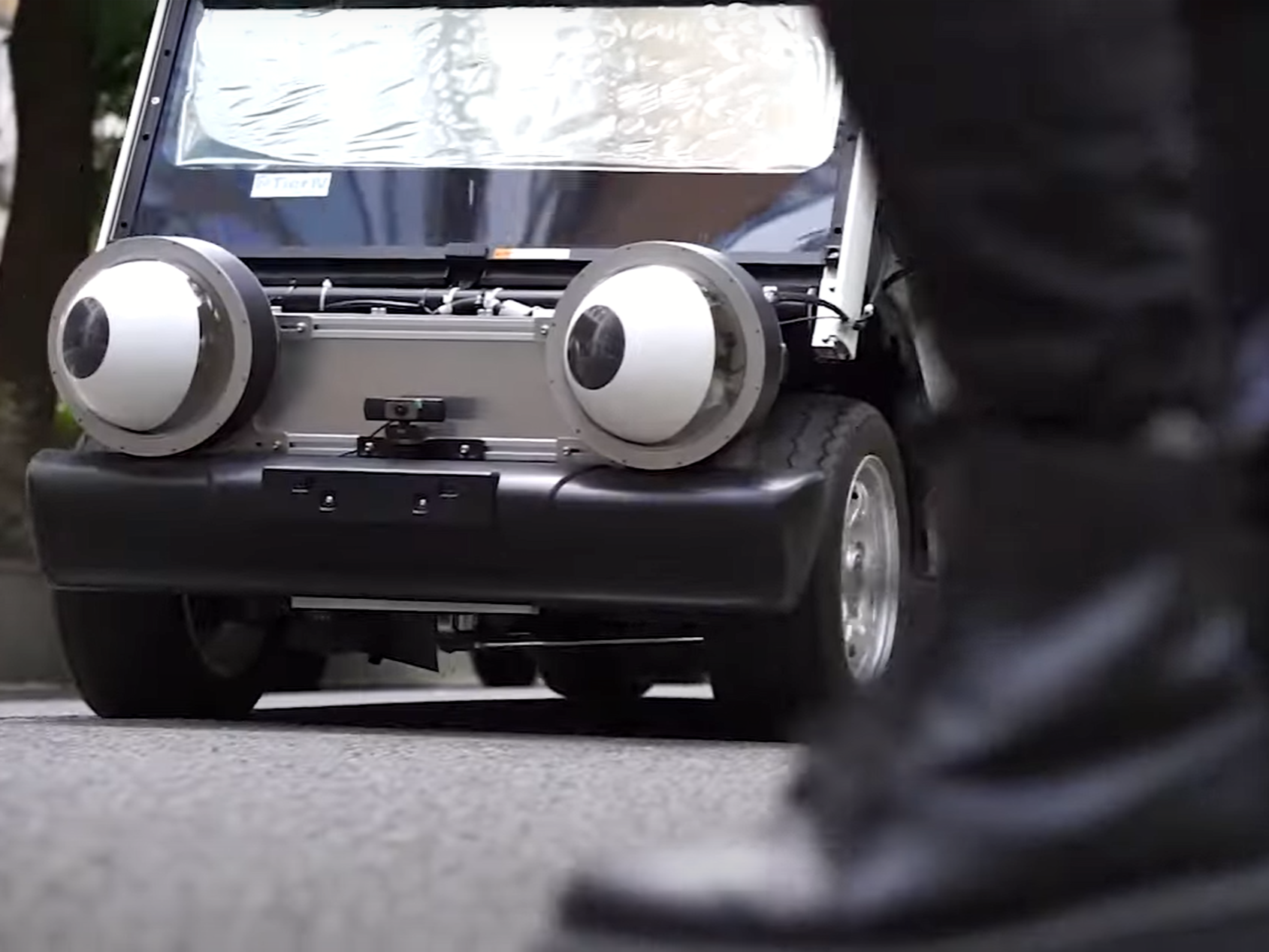Googly eyes on self-driving cars reduce accidents, study claims
Animated eyes improved safety for pedestrians, though some say they find them ‘a bit creepy’

Your support helps us to tell the story
From reproductive rights to climate change to Big Tech, The Independent is on the ground when the story is developing. Whether it's investigating the financials of Elon Musk's pro-Trump PAC or producing our latest documentary, 'The A Word', which shines a light on the American women fighting for reproductive rights, we know how important it is to parse out the facts from the messaging.
At such a critical moment in US history, we need reporters on the ground. Your donation allows us to keep sending journalists to speak to both sides of the story.
The Independent is trusted by Americans across the entire political spectrum. And unlike many other quality news outlets, we choose not to lock Americans out of our reporting and analysis with paywalls. We believe quality journalism should be available to everyone, paid for by those who can afford it.
Your support makes all the difference.Self-driving cars fitted with large animated eyes could prevent road accidents, according to a new study.
Researchers from the University of Tokyo and Kyoto University in Japan attached robotic eyes to the front of a golf cart in order to test whether pedestrians made safer decisions when crossing the road.
The manually-controlled eyes were designed to indicate whether or not the autonomous system had registered the presence of the pedestrian, and therefore was slowing down or stopping.
“If the car is not looking at the pedestrian, this implies that the car does not recognize the pedestrian. Thus, pedestrians can judge that they should not cross the street, thereby avoiding potential traffic accidents,” the researchers wrote in a recently published study, titled ‘Can eyes on a car reduce traffic accidents?’
“The results showed that the eyes can reduce potential traffic accidents and that gaze direction can increase pedestrians’ subjective feelings of safety and danger.”
The idea was to create an artificial replacement for eye contact, which can be a crucial means of communication between drivers and pedestrians when avoiding potentially dangerous situations.
The presence of the animated eyes also signalled to the pedestrians that the car was not being driven by a human, which could potentially better inform their street-crossing decisions.
The results suggested that most people felt safer when crossing a street if the approaching car had its ‘eyes’ focussed on them, though some participants claimed that the over-sized googly eyes were unsettling.
“A female participant explained that one reason for the dislike was that she felt someone was looking at her and felt a bit creepy, while a male participant had a similar opinion that he felt the eyes were scary and not cute,” the study noted.
“In addition, more than half of both male and female participants agreed (or strongly agreed) that knowing a car is self-driving may affect their street-crossing decision.”
The researchers now hope to develop different algorithms to control the eyes to effectively communicate the AI’s intentions and environmental awareness.

Join our commenting forum
Join thought-provoking conversations, follow other Independent readers and see their replies
Comments